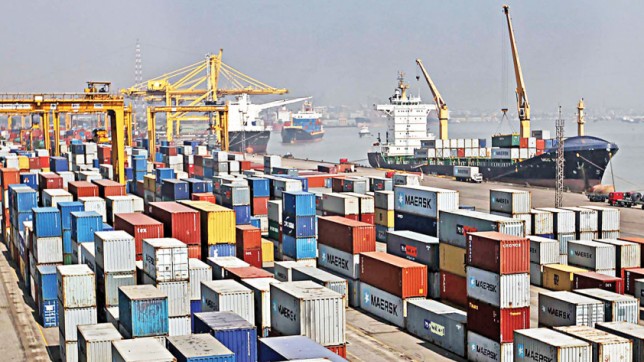Exports remain sluggish

Export earnings continued to remain sluggish until January this fiscal year, frustrated by slumping shipment of apparel and leather and leather goods, the two sectors that account for 85 percent of the total shipment.
Exports fell 5.21 percent year-on-year to $22.92 billion in July-January of the current fiscal year, data from the Export Promotion Bureau (EPB) showed.
In January export bucked the recovery trend seen in December. Manufacturers sent $3.61 billion worth of goods abroad in January -- 1.7 percent less than that in the same month a year ago, according to the EPB data.
“The reality is that we are getting less in value although the quantity remains almost the same,” said Asif Ibrahim, a director of Newage Group, one of the leading apparel exporters.
Apparel, which makes up more than 80 percent of national exports, slumped 5.71 percent year-on-year to $19 billion in July-January of fiscal 2019-20.
Knitwear exports declined 5.13 percent to $9.6 billion during this period, while shipment of woven garments dropped 6.29 percent to $9.44 billion.
Bangladesh has now overcapacity in making basic garment items, he said. “This has created a situation where many, particularly large exporters, are cutting prices of apparel to stay afloat,” he added.
“We also lag behind our peer countries in terms of production efficiency. We could not move upward in the value chain to make upmarket garments for a lack of research and development,” said Ibrahim, also a director of Bangladesh Garment Manufacturers and Exporters Association.
The shipment of leather and leather goods also continued to remain on a downward curve for a loss of consumers’ appetite for leather goods and a lack of environmental compliance by local firms.
Leather, leather goods and footwear exporters identified the poor standards of the central effluent treatment plant (CETP) in Savar leather estate as one of the major bottlenecks.
Md Nazmul Hassan, managing director of Leatherex Footwear Industries Ltd, said multiple factors affected exports: Imposition of 10 percent advance income tax on cash incentive is one of those.
“Besides, the demand for synthetic products is rising globally while the demand for leather goods is falling,” he said.
Between July and January, export earnings from leather and leather goods fell 10.78 percent year-on-year to $559 million.
Saiful Islam, president of Leathergoods and Footwear Manufacturers & Exporters Association of Bangladesh, said global fashion trend is changing affecting demand for leather goods.
“It is a big success of the government that it ensured shifting of tanneries to the leather industrial estate. Nevertheless, the CETP is not effectively functional yet,” he said.
Shipment of frozen and live fish, including shrimp, also declined.
The only silver lining was the increasing shipment of jute and jute goods, agricultural products and vegetables.
Hassan feared that the leather industry might suffer if the attack of deadly coronavirus intensifies.
“We are very much dependent on China for our raw materials. There will be a serious impact unless the situation improves fast. Supply disruption of products will also fuel inflation,” he said.
Islam, however, said the deadly virus might shift some orders to Bangladesh, as consumers are likely to feel shaky in buying products made in China.
“So, by the end of this fiscal year, exports are likely to recover,” he said.
